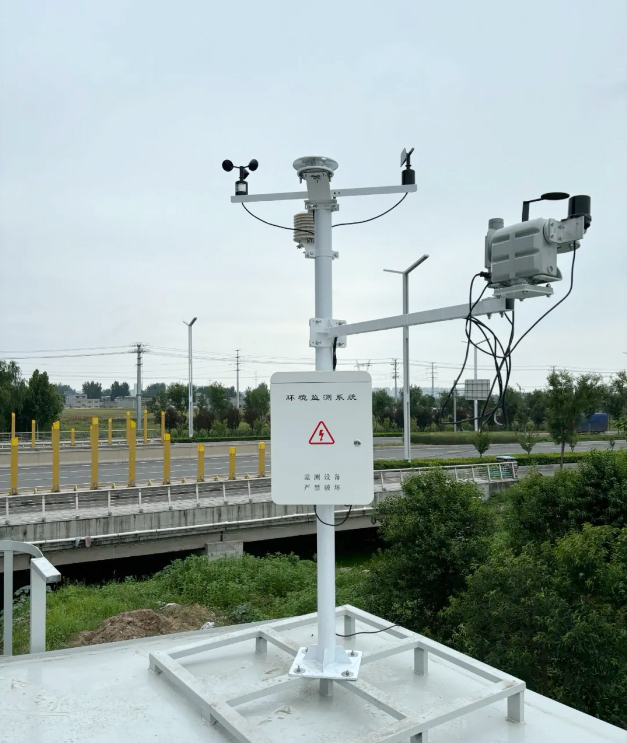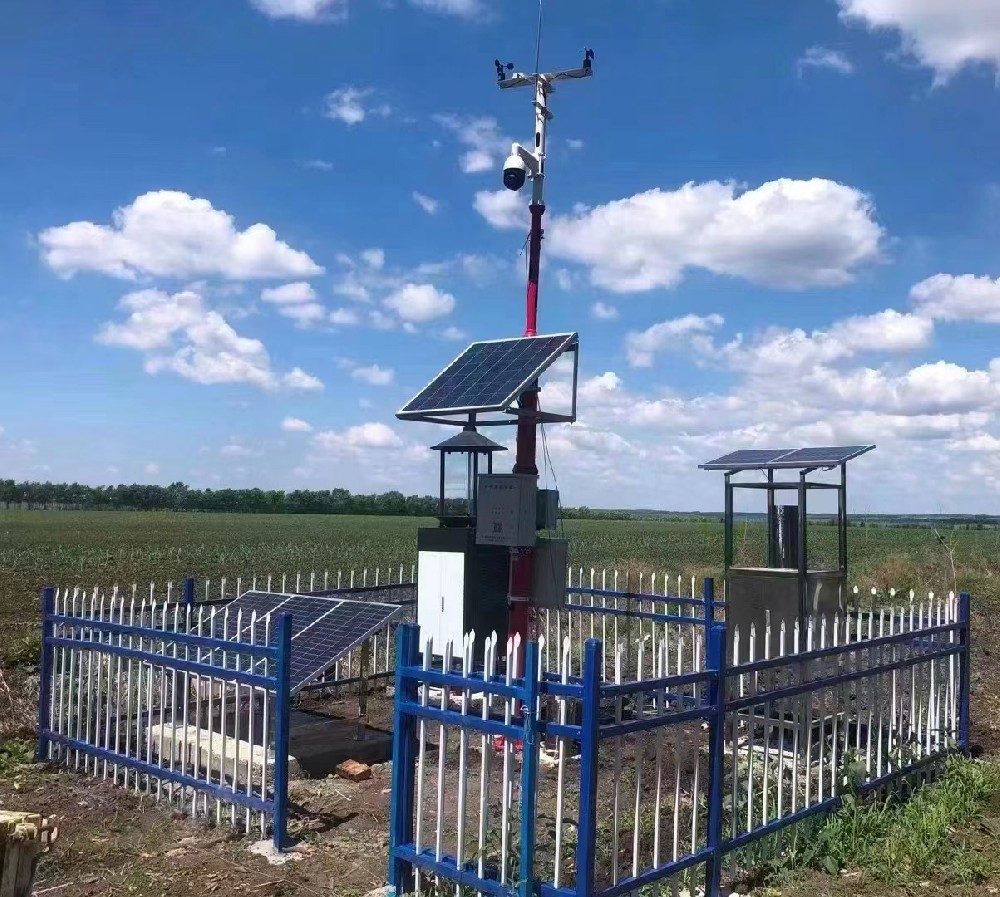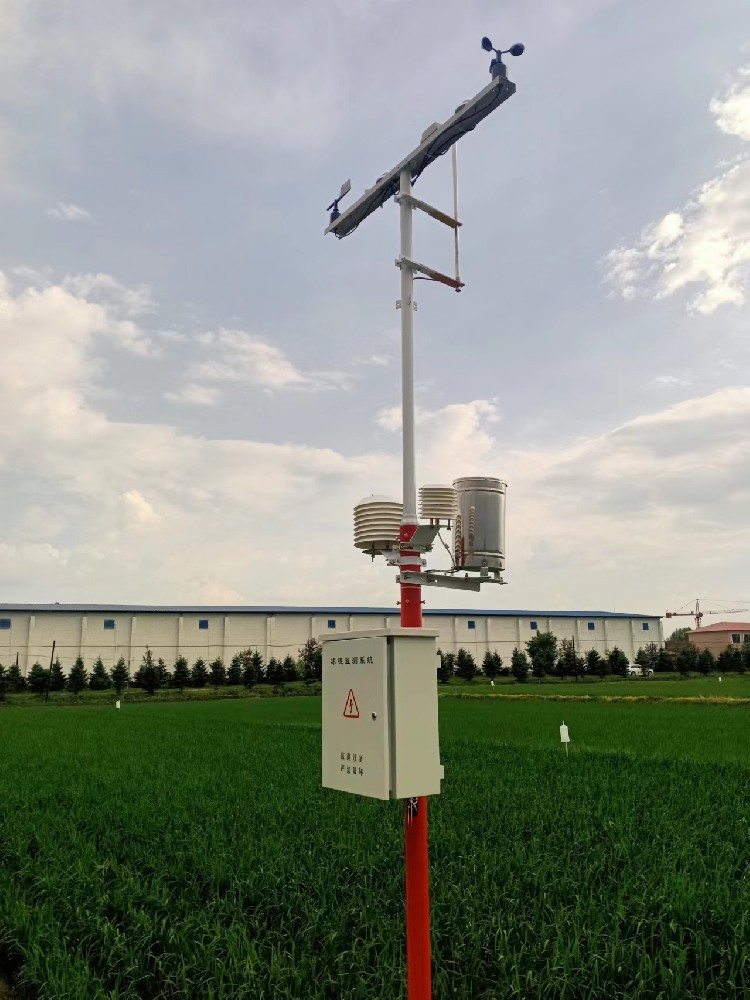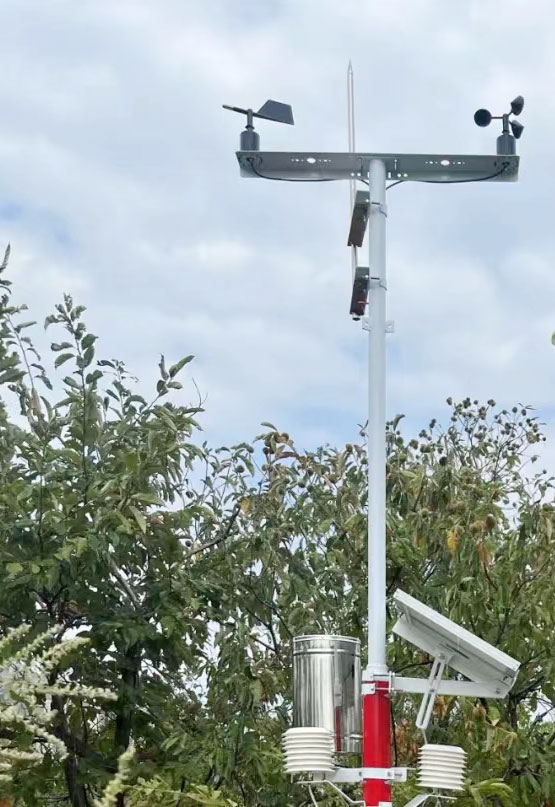

— Blogs —
—Products—
 Consumer hotline +8618073152920
Consumer hotline +8618073152920 WhatsApp:+8615367865107
Address:Room 102, District D, Houhu Industrial Park, Yuelu District, Changsha City, Hunan Province, China
Product knowledge
Time:2024-11-24 16:25:09 Popularity:580
Automatic weather stations play a crucial role in modern agriculture, environmental monitoring, and scientific research, providing real-time monitoring and recording of meteorological data, which serves as a scientific basis for relevant fields. To ensure the accuracy and reliability of the data collected by automatic weather stations, selecting the right installation location is critical. The following is a detailed guide based on professional standards and practical requirements.
- Open Area: The automatic weather station should be installed in a flat, open area, avoiding locations with steep slopes, depressions, or complex terrain. This ensures natural airflow without any geographical interference.
- Obstacle Restrictions: Ensure that there are no high crops or obstacles within 10 meters of the station that exceed 1 meter in height to avoid interference with parameters like wind speed and wind direction.
- Row of Obstacles: The distance between the weather station and any row of obstacles should be at least 10 times the height of those obstacles. For example, if there is a 20-meter-high building nearby, the weather station should be at least 200 meters away from the building.
- Isolated Obstacles: The distance to isolated obstacles should be at least 8 times the height of the obstacle, and the horizontal distance between isolated obstacles should not be less than 30 meters.
- Airflow: The weather station should be located in an area where the air can flow freely. High crops or trees exceeding 1 meter should not be planted within 10 meters of the observation site.
- Distance from Water Bodies and Traffic: The station should be at least 100 meters away from large bodies of water (e.g., reservoirs, lakes, rivers) at their highest water level. It should also be at least 200 meters away from railway embankments (100 meters for electrified railways) and at least 30 meters from roadbeds.
- Avoid Polluted Areas: The station should be away from areas with heavy air pollution, such as fog or smoke-prone zones, as well as factories, mining areas, or landfills. These places may release pollutants that can damage or contaminate the meteorological sensors.
- Electromagnetic Interference: The weather station should be located away from strong electromagnetic fields, such as those near high-voltage power lines, substations, and communication base stations. Electromagnetic interference can affect the electronic devices of the station, leading to transmission errors or inaccurate sensor readings. As a general rule, the station should be more than 100 meters away from high-voltage power lines and more than 200 meters from substations.
- Geological Stability: The station should be installed in an area with stable geological conditions to avoid regions prone to landslides, mudslides, or other geological hazards. This ensures the long-term stable operation of the weather station.
- Transport Accessibility: The location should allow easy access for the installation, maintenance, and repair of equipment. Ideally, the site should have direct road access, and the distance from maintenance personnel’s base of operations should not be too far.
- Security: The site should be in a secure area, avoiding places vulnerable to vandalism or theft. Measures such as protective fences and surveillance equipment may be necessary to safeguard the weather station.
- Representativeness: The installation location should reflect the broader meteorological characteristics of the surrounding area. This can be determined by analyzing local terrain, land use, and other environmental factors to select a representative location.

- Stability: The weather station should be securely fixed to a support structure or foundation to ensure stability. The choice of the foundation or support structure should be based on the geological conditions and the weight of the equipment. In some cases, a concrete base with expansion bolts may be needed.
- Wind Protection: In coastal or high-wind areas, additional measures, such as wind ropes on the tripod, should be added.
- Orientation: For directional sensors, such as the wind direction sensor, ensure it is installed with the correct orientation. Usually, wind direction sensors are marked to indicate the south direction, and the installation should align with this marking.
- Other Sensors: Other sensors should also be installed according to the instructions to ensure accurate data collection.
- Power Supply: Choose an appropriate power source based on the station’s energy needs. Solar power is a reliable option for outdoor installations. The quality and performance of solar panels and batteries should be ensured, and their placement should maximize solar energy collection efficiency.
- Grid Power: If using grid power, ensure the wiring is safe and aesthetically placed. Electrical cables should be elevated or placed inside PVC pipes to prevent wear and leakage.
- Grounding: Proper grounding should be performed to protect both the equipment and personnel. The equipment and support structure should be connected to the grounding system for effective grounding.
- Handling Equipment: Handle equipment gently during installation to prevent damage. Avoid marking or scribbling on equipment to maintain its cleanliness and integrity.
- Welding and Wiring: For components requiring welding or wiring, follow the manual or seek professional guidance to ensure correct and secure connections. Take care to avoid short circuits during welding.
- Inspection: After installation, check all equipment to ensure it is securely installed, connections are correct, and there is no damage.
- Functional Testing: Conduct functional tests, including data collection, transmission, and storage, to ensure all systems are working properly.
- Calibration and Verification: Perform necessary calibration and verification of sensors to ensure the accuracy of measurement data.
- Regular Checks: Perform regular inspections and maintenance, including cleaning sensor surfaces and checking connection cables.
- Fault Management: Promptly address any faults or anomalies, recording relevant information for future analysis and improvement.
- Lightning Protection: In areas with frequent thunderstorms, install lightning protection equipment and take other necessary precautions to safeguard both the equipment and personnel.

- Power On: First, power up the equipment and start the weather station system.
- Initial Check: Verify that the equipment powers on correctly and that sensors are producing data.
- Calibration: Calibrate temperature, humidity, pressure, wind speed, and wind direction sensors according to the equipment manual. This step is crucial to ensure accurate sensor readings.
- Calibration Environment: Calibration should be conducted under stable environmental conditions, avoiding external disturbances.
- Data Collection Test: Set the data collection frequency and verify that the data logger is collecting meteorological data at the prescribed intervals.
- Transmission Test: Test the communication function to ensure that data can be transmitted to the designated receiving device or platform. This includes testing wired (Ethernet) and wireless (Wi-Fi, GPRS, 4G, 5G, Lora, etc.) connections.
- Recording Settings: Configure the data recording frequency and method, such as hourly or daily records.
- Storage Check: Ensure that collected data is stored correctly in the internal storage or an external memory card.

- System Integration: After all components are working normally, conduct a system integration test to ensure that all parts of the weather station operate harmoniously.
- Data Validation: Compare the collected data with real-world environmental conditions to validate the accuracy of the system.
- Platform Setup: Configure the remote monitoring platform so that remote operators can view the weather station's status and collected data in real time.
- Control Commands: Ensure the remote monitoring platform can issue control commands to the weather station as needed.
- Safety Checks: Verify that safety measures are in place, such as lightning protection and grounding.
- Post-Incident Checks: After extreme weather events (such as storms or lightning), check the equipment for damage and implement necessary protective measures.
- Documentation: Organize all test records, calibration data, and equipment manuals into proper documentation.
- Archiving: Archive the documentation for future reference, especially for maintenance and troubleshooting.
- Challenges: Urban areas are typically characterized by dense buildings, high electromagnetic interference, and varying temperature and humidity conditions due to traffic and human activities. Installing an automatic weather station in such areas requires careful consideration to minimize interference.
- Solution: Choose a location that is away from large buildings, busy roads, and sources of heat, such as air conditioning units or industrial exhausts. The installation should be at least 50 meters from high-rise buildings and traffic-heavy streets. If possible, place the weather station on a rooftop or on elevated structures to avoid local disturbances caused by traffic and heat islands.
- Additional Considerations: Pay attention to electromagnetic shielding for sensors and equipment to reduce the impact of surrounding electronic devices, such as cell towers and powerlines. Ensure proper shielding for power cables and data transmission systems.
- Challenges: In rural areas, weather conditions can be more extreme, with potential for strong winds, storms, and rapid temperature changes. The proximity to crops or livestock can also pose challenges in terms of obstruction and interference.
- Solution: Select an open and flat area, away from tall crops (such as corn or rice), trees, or irrigation systems. The station should be placed at a height above crop level to avoid sensor obstruction. Ideally, the station should be located at least 20-30 meters away from large farming equipment and irrigation pipes to prevent interference in wind and temperature measurements.
- Additional Considerations: Be mindful of potential environmental contaminants such as fertilizers or pesticides, which could affect the sensors. It may be beneficial to install an automatic cleaning system for sensors, especially in areas prone to dust or debris.

- Challenges: Coastal environments can introduce saltwater corrosion, high humidity, and extreme weather conditions, including high winds and storms. The presence of salt in the air can also damage electronic components.
- Solution: Choose a location with good ventilation and shield the weather station equipment with anti-corrosion materials. Use stainless steel or marine-grade materials for the weather station’s structural components. The station should be installed on elevated platforms to avoid damage from flooding or rising tides.
- Additional Considerations: Use specialized coatings for electronic sensors and equipment to resist salt corrosion. Regular maintenance is essential, with more frequent checks for corrosion and cleaning of the equipment. It’s also important to calibrate the sensors more often due to the harsh coastal conditions.
- Challenges: High-altitude locations pose unique challenges due to lower air pressure, temperature fluctuations, and potential for snow accumulation and harsh wind conditions. The installation site should be carefully selected to avoid exposure to avalanche-prone areas and harsh winds.
- Solution: Install the weather station in a sheltered location, such as on the lee side of a mountain, where it is protected from the prevailing winds. Ensure that the structure is sturdy enough to withstand strong winds and snow accumulation. The station should be mounted on elevated, solid platforms to avoid snow build-up and flooding.
- Additional Considerations: Use weatherproof and heated enclosures for sensors to protect them from freezing conditions. Keep in mind that high-altitude installations may require specialized power sources, such as wind or solar energy, due to limited access to electrical grids.
- Challenges: Installing a weather station in remote or wilderness areas can be difficult due to the lack of infrastructure, transportation, and access to regular maintenance. These locations may also experience severe weather conditions, wildlife interference, and isolation.
- Solution: Choose a location that is both safe from wildlife interference (such as large animals or insects) and accessible for regular maintenance. Remote areas often require a combination of solar power and backup batteries, as well as reliable wireless data transmission methods, such as satellite or long-range radio.
- Additional Considerations: Given the isolation of such sites, weather stations may require automated data collection and remote monitoring systems to allow operators to monitor conditions without physically visiting the site frequently. Install adequate protection against extreme weather events, such as wind storms, floods, and hail.
- Scheduled Inspections: Schedule regular inspections based on the environmental conditions and usage of the weather station. In some cases, quarterly inspections may be necessary, especially for remote or coastal locations where saltwater and weather extremes can quickly degrade equipment.
- Sensor Calibration: Sensors should be calibrated periodically to maintain data accuracy. Depending on environmental conditions, recalibration may be required every 6-12 months or as specified by the manufacturer.
- Data Validation: Periodically validate the data to ensure that sensors are functioning correctly. This can be done by comparing the weather station data with other nearby stations or satellite data. Any inconsistencies should be investigated, and faulty sensors should be replaced or repaired promptly.
- System Logs and Updates: Keep a record of all maintenance activities, sensor calibrations, and system updates. This documentation can help in troubleshooting and tracking the performance of the station over time.

- Data Security: Ensure that all collected data is securely stored and backed up. Use cloud storage or other remote systems for data redundancy. Make sure that access to the data is restricted to authorized personnel to protect sensitive information.
- Long-term Data Retention: For historical data analysis, set up automated data archiving processes. Ensure that the data storage system can handle large volumes of data over extended periods without compromising data integrity.
- Software Upgrades: Regularly check for updates to the weather station’s software and firmware to improve functionality, fix bugs, or enhance system capabilities.
- Expansion Plans: As new technologies become available, consider expanding the capabilities of the weather station with additional sensors (e.g., air quality, solar radiation) or more advanced data transmission technologies (e.g., 5G, IoT networks).

Conclusion
Selecting the right location for installing an automatic weather station is a critical step in ensuring the accuracy and reliability of meteorological data. The terrain, environmental factors, and specific needs of the location must be considered to avoid data interference and to maintain equipment longevity. By following the best practices outlined in this guide, you can optimize the performance of your weather station and make the most of the valuable data it collects. Regular maintenance, calibration, and proactive monitoring will ensure that the station continues to function effectively in the long term, providing accurate data for research, agricultural planning, or environmental monitoring.
Related recommendations
Sensors & Weather Stations Catalog
Agriculture Sensors and Weather Stations Catalog-NiuBoL.pdf
Weather Stations Catalog-NiuBoL.pdf
Related products
 Combined air temperature and relative humidity sensor
Combined air temperature and relative humidity sensor Soil Moisture Temperature sensor for irrigation
Soil Moisture Temperature sensor for irrigation Soil pH sensor RS485 soil Testing instrument soil ph meter for agriculture
Soil pH sensor RS485 soil Testing instrument soil ph meter for agriculture Wind Speed sensor Output Modbus/RS485/Analog/0-5V/4-20mA
Wind Speed sensor Output Modbus/RS485/Analog/0-5V/4-20mA Tipping bucket rain gauge for weather monitoring auto rainfall sensor RS485/Outdoor/stainless steel
Tipping bucket rain gauge for weather monitoring auto rainfall sensor RS485/Outdoor/stainless steel Pyranometer Solar Radiation Sensor 4-20mA/RS485
Pyranometer Solar Radiation Sensor 4-20mA/RS485
Screenshot, WhatsApp to identify the QR code
WhatsApp number:+8615367865107
(Click on WhatsApp to copy and add friends)